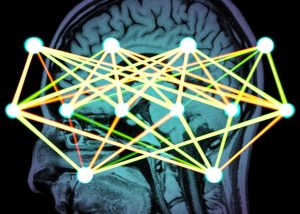Social Media Algorithms filter news content for users. In today’s digital age, social media platforms have become primary sources of news for many people. These platforms use sophisticated algorithms to filter and present news content to users based on various factors. The algorithms analyze a plethora of data points, including user behavior, preferences, and interactions, to decide which news stories appear on a user’s feed. This filtering process ensures that users are more likely to see content that aligns with their interests and past behaviors, creating a personalized news experience.
Algorithms prioritize engagement, influencing news visibility. One of the primary goals of social media algorithms is to maximize user engagement. To achieve this, the algorithms prioritize content that is likely to generate reactions, comments, shares, and other forms of interaction. This means that news stories that evoke strong emotions or provoke discussions are more likely to be prominently displayed. As a result, the visibility of news content is heavily influenced by its potential to engage users, rather than its factual accuracy or journalistic quality.
How Algorithms Determine News Visibility

Social Media Algorithms prioritize engagement metrics for news visibility. The visibility of news on social media platforms is largely determined by engagement metrics such as likes, shares, comments, and click-through rates. These metrics serve as indicators of a story’s popularity and relevance. Algorithms use these metrics to rank and prioritize news stories, ensuring that the most engaging content reaches a wider audience. Consequently, news stories that generate high levels of interaction are more likely to be seen by users, while less engaging stories may remain obscure.
Social Media Algorithms filter news based on user interaction history. Another critical factor in determining news visibility is a user’s interaction history. Social media algorithms track and analyze users’ past behaviors, including the types of content they engage with, the pages they follow, and the posts they interact with. This data is used to create a personalized feed that reflects the user’s interests and preferences. By filtering news content based on interaction history, algorithms ensure that users are more likely to see stories that resonate with them, reinforcing their existing views and beliefs.
Impact of algorithmic curation on public opinion
Social Media Algorithms influence news exposure and public opinion. The way news is curated and presented by social media has a significant impact on public opinion. By prioritizing certain news stories over others, algorithms shape the information landscape and influence what users perceive as important or relevant. This selective exposure can reinforce existing opinions and create echo chambers, where users are primarily exposed to viewpoints that align with their own. As a result, algorithmic curation can play a pivotal role in shaping public discourse and opinion.
Algorithmic curation affects the diversity of news perspectives. The personalized nature of social media algorithms can lead to a narrowing of news perspectives. By filtering content based on user preferences and engagement, algorithms may inadvertently limit exposure to diverse viewpoints. This can result in a homogenized news feed that lacks the breadth and diversity of perspectives necessary for a well-rounded understanding of current events. The reduced exposure to differing viewpoints can contribute to polarization and a fragmented public discourse.
Bias and misinformation in algorithm-driven news
Social Media Algorithms amplify bias in news dissemination. One of the critical concerns with algorithm-driven news is the potential for bias amplification. Algorithms are designed to optimize for engagement, which can inadvertently favor sensationalized or biased content that elicits strong reactions. This can lead to the disproportionate dissemination of biased news stories, reinforcing existing prejudices and skewing public perception. The amplification of bias through algorithms can undermine the objectivity and balance that are essential for informed decision-making.
Misinformation spreads rapidly through Social Media Algorithms. The viral nature of social media platforms, coupled with algorithms that prioritize engagement, creates an environment where misinformation can spread rapidly. False or misleading news stories that generate high levels of interaction are quickly amplified and disseminated to a broad audience. The speed and reach of misinformation on social media pose significant challenges for fact-checking and correction, making it difficult to contain the spread of false information. This can have serious implications for public trust and the integrity of the information ecosystem.
The influence of user engagement on news algorithms
User engagement drives Social Media Algorithms prioritizing news content. User engagement is a key driver of how social media algorithms prioritize news content. The more users interact with a particular news story, the more likely it is to be promoted by the algorithm. This creates a feedback loop where highly engaging content receives more visibility, leading to even greater levels of interaction. The emphasis on user engagement ensures that news stories that capture users’ attention and provoke reactions are given prominence in their feeds.
High interaction influences Social Media Algorithms’ news visibility. The level of interaction a news story receives directly influences its visibility on social media platforms. Stories that generate a high volume of likes, shares, comments, and other forms of engagement ranked higher by the algorithms and are more likely to be seen by a larger audience. This focus on interaction can sometimes overshadow the importance of accuracy and quality in news reporting, as sensational or emotionally charged stories are more likely to elicit strong reactions and achieve higher visibility.
Regulatory challenges in algorithmic news distribution

Transparency in Social Media Algorithms for news distribution. One of the major regulatory challenges in algorithmic news distribution is ensuring transparency. The inner workings of social media algorithms often opaque, making it difficult for users and regulators to understand how news content is selected and prioritized. Greater transparency is needed to provide insights into the criteria and processes used by algorithms to curate news. This can help users make more informed decisions about the information they consume and hold platforms accountable for their role in shaping the news landscape.
Addressing bias in Social Media Algorithms shaping news. Another significant regulatory challenge is addressing bias in social media algorithms. Given the potential for algorithms to amplify biased content, there is a need for mechanisms to identify and mitigate such biases. This could involve implementing algorithmic audits, developing guidelines for fair and balanced content curation, and promoting diverse perspectives in news feeds. Addressing bias is crucial for ensuring that social media platforms contribute to an informed and balanced public discourse.
Future trends in social media algorithms and news
Social Media Algorithms prioritize engagement over factual news. Looking ahead, it is likely that social media algorithms will continue to prioritize engagement over factual accuracy in news dissemination. The focus on maximizing user interaction can sometimes come at the expense of promoting high-quality, fact-based journalism. As algorithms evolve, there is a need for a greater emphasis on balancing engagement with the accuracy and reliability of news content to ensure that users receive trustworthy information.
Future trends show increasing personalization in news delivery. Future trends in social media algorithms indicate a move towards even greater personalization in news delivery. Advances in machine learning and data analytics are enabling algorithms to create highly customized news feeds tailored to individual users’ preferences and behaviors. While this can enhance user experience by providing relevant content, it also raises concerns about the potential for echo chambers and the narrowing of news perspectives. Ensuring that personalization does not come at the cost of diversity and objectivity will be a key challenge for the future of algorithm-driven news.




